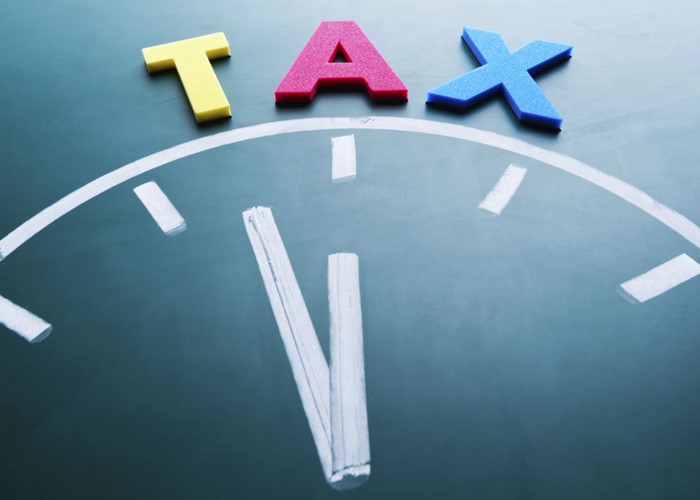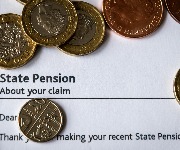How to dodge the 40% tax band

Tax changes mean two million people are being dragged into the 40% tax band. But there are ways to avoid paying more to the taxman!
Thanks to changes to income tax allowances, up to two million extra British earners will be sucked into the 40% tax bracket, according to research by think-tank the Institute for Fiscal Studies (IFS).
The IFS estimates that, due to tax changes introduced in George Osborne's five Budgets as Chancellor, 'fiscal drag' will increase the number of higher-rate taxpayers by two million between the 2010/11 and 2015/16 tax years.
Higher taxes for middle-earners
The IFS estimates that 29.7 million Brits were liable for income tax out of a UK adult population of 51.4 million in 2012/13. The vast majority of these taxpayers work, but this group also includes well-off pensioners and other non-working earners.
Of these 29.7 million taxpayers, 4.1 million paid higher-rate (40%) or additional-rate (45%) tax in 2012/13. In other words, roughly one in seven taxpayers (14%) earns enough for some income to lie in the 40p tax band.
The problem is that only two million taxpayers earned enough to pay higher-rate tax in 1994/95, so this number has more than doubled in less than 20 years. Iin 1979/80, only 3% earned enough to pay top rates of tax, so this proportion has soared since Mrs Thatcher's rise to power.
How to dodge the '40% tax trap'
The latest research from the IFS calculates that, on average, higher-rate taxpayers will be £546 a year worse off following the Chancellor's Budget last Wednesday.
This is partly because the Chancellor only increased the higher-rate threshold from its present level of £41,450 in 2013/14 to £41,865 in 2014/15. Thanks to inflation, this increase of £415 isn't going to prove much help.
So what can you do to avoid becoming a victim of fiscal drag and higher tax rates?
Grab tax relief on pension contributions
When you contribute to a company or personal pension, these contributions attract tax relief at your highest rate (20%, 40% or 45%). To bag this tax relief, always declare on your annual tax return any pension contributions not made through PAYE (via your payroll).
The great thing about these pension contributions is that they reduce your taxable income, hauling more of your income out of the 40% and 45% tax bands.
There is a £40,000 yearly cap on pension contributions that attract tax relief, but you can 'carry forward' up to three years of unused allowances. In theory, this means that you could put £160,000 into a pension this tax year (but you'll get tax relief on this sum only if you've earned at least this amount this tax year).
Parents: collect childcare vouchers
Working parents with children aged below 16 can cut their tax bills by claiming childcare vouchers from their employers. Switching part of your salary for these tax-free vouchers can lower your taxable earnings by up to £243 a month (£2,916 a year) per parent.
For parents paying 40% tax and joining this scheme now, the yearly limit for vouchers is £1,484 and the yearly saving is £624 per parent. For 45% taxpayers, the yearly voucher limit is £1,166 and the yearly saving drops to £606. Obviously, these savings are worth grabbing with both hands.
It's worth noting that the scheme won't be open to new applicants for that much longer as a result of the new childcare support from the Government. For more read Families to get up to £2,000 a year to help with childcare costs.
Becoming more tax efficient
If you can't avoid the 40% tax band, you might like to look at ways to cut your tax costs in other areas. Here are just a few ideas.
Use Cash ISAs
The Individual Savings Account (ISA) is our most popular tax haven, used by as many as 25 million savers and investors. In the current 2013/14 tax year, savers aged 16+ can deposit up to £5,760 into a Cash ISA and pay absolutely no tax on the interest this cash earns.
Even better, with the introduction of New ISAs from 1st July, this yearly limit almost triples to £15,000. Your first port of call for new (or existing) spare cash should always be an ISA. After all, why pointlessly pay tax on your savings interest for no good reason?
Compare ISAs with lovemoney.com
Claim tax-free benefits
Around nine in 10 working families (90%) are entitled to some form of welfare benefits or tax credits. Similar support is also on offer to pensioners, working families and sick, disabled or unemployed UK residents. While some of these payouts are means-tested and taxed, others come completely tax-free.
Never declare any of these 32 tax-free state benefits on your tax return, or you'll needlessly pay too much tax.
Dodge tax with your spouse
If your spouse or same-sex Civil Partner doesn't work or is on a low income, you can use them to reduce your tax bill (or vice versa). For example, by transferring assets to a lower-earning spouse, you can reduce your liability to Capital Gains Tax (CGT) at 18% or 28%. Transfers between spouses do not attract CGT, so you can switch ownership before selling assets at a profit.
Likewise, any income generated by gifted assets would be taxed at your spouse's marginal tax rate, producing further tax savings. So, if you're needlessly paying tax on unearned income, then gift it to your spouse to lower your tax bill.
Gift Aid: get tax relief on charitable donations
The UK's tax treatment of charitable and political donations is among the most generous in the world. As a higher-rate taxpayer, a £100 donation to a registered good cause boosts the value of your gift to £125. Even better, you can claim a £25 tax rebate by declaring this donation on your next tax return. As a result a £125 contribution costs you a net £75!
Compare ISAs with lovemoney.com
More on tax:
Tax codes: how to check you're on the right one
How to cut your Inheritance Tax bill
The towns that pay the most Income Tax
Working from home: how to get a tax rebate
Most Recent
Comments
Be the first to comment
Do you want to comment on this article? You need to be signed in for this feature







